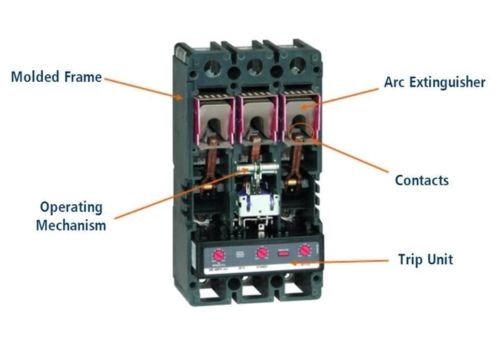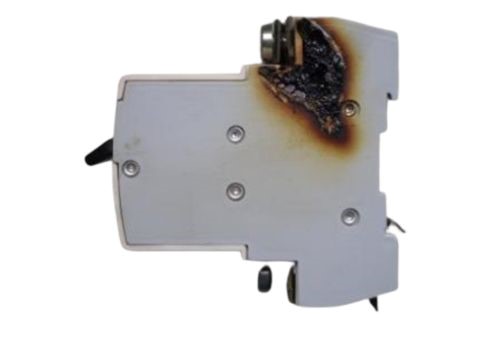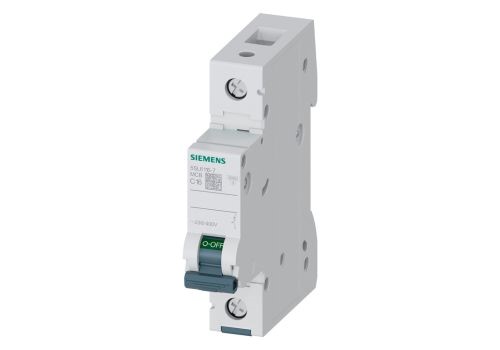Circuit breakers are electrical components implemented in electrical systems to protect circuits from shorts and overloads. Circuit breakers can go bad for a variety of reasons like wearing from age, excessive loads, and environmental factors. Ensure you install circuit breakers properly and undertake frequent maintenance to prevent them from going bad.
Signs of a Bad Circuit Breaker
A bad circuit breaker is a safety risk posing electrical hazards like shock and fires. You need to be keen to pick out signs of a bad circuit breaker and immediately address the situation. This way, you ensure your electrical system continues operating reliably.
Common signs that can signify a failing circuit breaker include:
i. Repeated Tripping
Circuit breakers cut electric current supply in a circuit by tripping as a safety measure. Ideally, you reset the circuit breaker and everything continues normally. However, when the circuit breaker repeatedly trips after you reset it, it’s an indicator of an underlying problem.
ii. Circuit Breaker Fails to Reset
When a circuit breaker trips, you can reset it manually upon which current flow resumes in the circuit. However, sometimes the circuit breaker trips soon after you reset it. This is indicative of a defective breaker or sometimes a short circuit or grounding issue.
iii. Burning Odor
When you catch a whiff of burning smell close to the panel, it is safe to assume there’s a problem with the breaker. Burning can result from an electrical arcing within the breaker or overheating. It is a safe move to disconnect the power at this point.
iv. Panel Corrosion
Environmental elements such as humidity and moisture can affect your circuit breaker panel resulting in formation of rust. If not addressed, the corrosive element of rust on your panel can eventually disable the breaker.
v. Dimming Lights
A flickering or dimming light can be a sign that your circuit breaker is bad probably incapable of maintaining steady current. This is especially true where the dimming or flickering occurs when you power other appliances on and off.
vi. Bulbs Burning Out
A bad circuit breaker in your home circuit can result in light bulbs burning out as frequently as you replace them. When a circuit breaker fails, it can result in power surges that damage connected circuit devices like light bulbs.
vii. Panel Heats Up
You might touch the circuit breaker panel and find it hot. Such heat build-up if not addressed can result in failure of the circuit breaker. Overheating of the breaker can stem from a circuit overload, wear or loose connection.
viii. Issues with Electrical Performance
Sometimes when connecting appliances to your circuit, you experience issues like surges and dropouts. This is usually an indicator the circuit breaker has gone bad as it fails to sustain a stable connection. The same happens when you add a new or specific appliance to your existing load.
ix. Buzzing or Humming Sound
Electrical connections are not mechanical and as such should run silently. If you hear a humming or buzzing sound in your circuit breaker panel, it is indicative of an underlying problem. Such a sound can emanate from undesired connections and can result in a bad breaker.
x. Melted Wires and Discolored Outlets
These typically occur due to overheating meaning your electrical system is overloaded. Electrical wires melt and discolor outlets owing to carrying excessive current. When this happens, it means the circuit breaker has failed to protect the circuit and is bad.
Causes of Circuit Breaker Failure

Parts of Circuit Breaker
Circuit breakers are essential circuit components protecting you from electric shocks and your property from damage. While made to offer reliable service for an extended period, circuit breakers can fail. Some of the reasons why you can experience failure of circuit breakers include:
· Age of the Breaker
A circuit breaker has an average lifespan ranging between 20 and 30 years. Beyond this time, circuit breakers can succumb to failure through wear and tear and not offer same circuit performance efficiency. If your breaker has surpassed its service life, a change would be infallible.
· Excessive Load
Circuit breakers are rated by their load capacity. When you have a circuit breaker exceeding this capacity, the breaker trips cutting connection supply. An excessively high load fails the breaker by generating heat with potential to damage the breaker’s internal components.
· Environmental Factors
High temperature values can alter the structure of internal components of the circuit breaker resulting in mechanical failure. Contrarily, high humidity and moisture levels can induce corrosion on parts of the breaker hampering electrical performance.
· Short Circuits
When a current carrying line interacts with grounding or a neutral line, an accidental current path is created resulting in a surge. This overwhelming current flow usually overpowers the circuit breaker destroying it.
· Electrical Surges
Sudden surges in power as experienced from returning power after an outage and lightning strikes can effectively destroy the circuit breaker. Additionally, transient voltages will have the same effect over time.
· Defective Manufacturing
In making a circuit breaker, a poor choice of materials and process flaws can result in inherent defects in circuit breakers. As opposed to the long-life span of breakers, these defective components prematurely fail during application.
· Low Load Wiring
Utilizing low load wiring for your circuit with attached appliances and devices drawing an excess, causes the circuit breaker fail.
· Physical Damage
Heavy impact on the circuit breaker during installation can damage internal components of the breaker making operation defective and failure imminent. Also, highly unstable settings like sustained vibrations can cause loose connections in the breaker hampering their performance.
What to Do When a Circuit Breaker Goes Bad

Damaged Circuit Breaker
Not everyone is skilled or knowledgeable enough on matters to do with electricity. If this is you, when you notice a circuit breaker is bad, disconnect power and contact a qualified and licensed electrician. Otherwise, the following steps are useful in such a situation:
- Identify the circuit with the bad breaker and try manually resetting it to the on position. If it trips yet again or fails to reset, it means there’s an underlying issue requiring further probing.
- While in protective gear like insulated gloves, disconnect the circuitry from the main power supply to reduce risk of shock. Open the panel and carefully inspect he breaker for visible damage markings.
- Where there is visible damage, it is simply settled by replacing the circuit breaker. Otherwise, you can troubleshoot the circuit and inspect the wiring to identify other problem.
- You can also use a multimeter in testing the breaker’s voltage and continuity. If you have an identical circuit breaker, you can swap them to check for continuity.
- Where you need to replace the breaker, carefully remove the faulty one and install the new one with power off.
Frequency of Circuit Breaker Failure
A decent circuit breaker can perform exceptionally well for over twenty years. Nonetheless, factors such as quality and area of application will certainly determine if they last longer or not. Circuit breakers like other electrical devices are subject to wear over time.

Circuit Breaker in Good Condition
You can except very few instances of failure for a quality, correctly installed and well-maintained breaker. However, using a breaker under continuous high loads and in extreme temperature and humidity conditions will certainly welcome frequent failure.
Factors Affecting Lifespan of Circuit Breakers
Understanding the factors influencing the lifespan of circuit breakers is essential if you intend to extend their operational life. The lifespan of circuit breakers can vary significantly depending on the following factors:
- The design specifications and manufacturing standards of the breakers.
- Operating loads of the breakers, certainly not at near maximum rated capacity.
- Environmental conditions in area of application considering temperature and humidity levels.
- Rate of wear owing to the material integrity and number of operations.
- Installation and maintenance protocols.
Conclusion
A bad circuit breaker poses a safety hazard owing to the nature of electrical issues that come along with it. Upon identifying a bad circuit breaker, it serves you well to address it as soon as is possible. Due to their wide availability, a common remedy is to replace a bad circuit breaker.
Related resources:
DC Circuit Breaker – Source: KDM
What is Circuit Breaker Panel – Source: KDM
Miniature Circuit Breaker – Source: KDM




